Mariyatsu Castle
-History of peninsular brave (5) sudden fall of rival let way open-
Overview
Name: Mariyatsu castle (Mariyatsu-jo)
Alias: Marigayatsu-jo (Marigayatsu-castle)
Place: Mariyatsu Kisarazu city, Chiba
Type: Mountain Castle
Built: 1458
Remaining remnants: Clay walls and dry moats
Title:
Brief History
Continued from Part 4
Mariyatsu castle (真里谷城) is located at Mariyatsu area in the east part of current Kisarazu city, about 3 kilometer west of Lake Takataki-ko. Mariyatsu area exists in a hilly area between Obitsu-gawa river and Yoro-gawa river, and castle site is a narrow hill of about 100 meter height between Takeda-gawa river and Izumi-kawa river, both are tributaries of Obitsu-gawa river.
Castle site is at the center of Boso peninsula geographically, and also from the perspective of communication. At the north of castle site Route 409 which horizontally crosses the peninsula runs, and at the west of the castle Route 410 which passes Kururi town and runs toward the south edge of the peninsula.
At the east Route 297 continues toward south to the east cost of the peninsula passing Otaki area and also the reverse side of Route 297 proceeds northward to current Ichihara city and Tokyo Bay coast. Even though unconsciously but when we drive Boso peninsula we frequently run near the site of Mariyatsu castle.
Origin of Mariyatsu castle and Mariyatsu clan
Mariyatsu castle might be built in 1458 by local lord Nobunaga Takeda (?-1477). The name of Takeda Nobunaga is a composite of famous warlord Shingen Takeda (1521-1573) and Nobunaga Oda (1534-1582), and there is no relationship with the latter but deep relationship with the former.
It mean Nobunaga Takeda is a people of Takeda clan in Kai province (Yamanashi prefecture), later brought Shingen Takeda. Takeda clan was a traditional family of Minamoto clan which later brought Yoritomo Minamoto (1147-1199), the founder of Kamakura Shogunate, and inherited the governor of Kai province.
But in the former half of 15th century, Takeda clan participated in the revolt of Zenshu Uesugi (?-1417), the Kanto Kanrei, and was subjugated in 1417. Nobunaga tried to regain the governor of the province, but finally that position was given to his elder brother supported by Muromachi Shogunate, and he was also suppressed Kamakura Kubo Highness, the representative of Shogunate in Kanto region.
Entrance into Kazusa province
Finally Nobunaga Takeda surrendered to Kamakura Kubo Highness and became its retainer. In 1455, Shigeuji Ashikaga (1438-1497), 5th Kamakura Kubo Highness, raised his army against Kanto Kanrei and Muromachi Shogunate, but was deprived his main base Kamakura city then moved to Koga Castle (Ibaraki prefecture) and named as Koga Kubo Highness.
To protect the backward of his main base Koga castle and make detour attack to Kanto Kanrei territory, Shigeuji Ashikaga needed to capture Boso peninsula. In 1456, Shigeuji ordered Nobunaga Takeda to enter Kazusa province (upper half of Boso peninsula), and also Yoshizane Satomi (?-1488) to land to Awa province (lower half of Boso peninsula).
Nobunaga Takeda smoothly expended his territory in Kazusa province, and built Mariyatsu castle and Chonan castle, those are only 10 kilometer apart at the both side of Yoro-gawa river and near from the border to Shimousa province (north part of Chiba prefecture).
Growth and support of Oyumi Kubo Highness
Later Nobunaga Takeda placed his son Nobutaka Takeda (1416-1480) as the main family at the Chonan castle, and moved to Mariyatsu castle with his grandson Nobuoki Mariyatsu (1433-1511. After the death of Nobunaga Takeda and Nobutaka Takeda, Nobuoki Mariyatsu left the main family of Takeda clan and named as Mariyatsu clan as an independent lord.
As there are no strong other lord surrounding, Mariyatsu clan could expand at the time of Nobuoki Mariyatsu and his son Nobukatsu Mariyatsu (?-1523). They expand their territory around Kazusa province, including branch castles such as Shiizu castle, Kururi castle, Sanuki castle, Tsukuorumi castle, Otaki castle or Katsuura castle (Chiba prefecture).
In 1517, Ashikaga Yoshiaki (?-1538), the younger brother of Koga Kubo Highness Takamoto Ashikaga (1485-1535), suddenly rebelled to his elder brother and captured Oyumi castle (Chiba prefecture) from Hara clan, under the support of Mariyatsu clan. Yoshiaki named as Oyumi Kubo Highness, and tried to establish his authority.
Jokan Mariyatsu (?-1534), the son of Nobukatsu Mariyatsu, maximally utilized the fame of Oyumi Kubo and tried to expand the power of Mariyatsu clan. Mariyatsu clan arrived at north east corner of Tokyo Bay turned its army to west, toward Musashi province. Along with the growth of Mariyatsu clan, Mariyatsu castle was expanded into large one.
Structure of Mariyatsu castle
Mariyatsu castle spreads over the narrow ridge of 600 meter long between two rivers. Central area of the castle is a rectangular one of about 120 meter long and 80 meter width, being surrounded by line of clay wall and might have main palace of the castle. Another core area now used as a ground of shrine exist at the north of central area, and many terraces were built at the backward of core area.
At the north of central area, many terraces spreads over the slope of the hill. As a commanding point, secondary area and third area are a bit larger than surrounding area and being surrounded by the line of clay wall. At the north of third area there is an outer fort name Ichi-Nono Kuruwa, having the ruin of main gate and well.
About 3 kilometer northwest from the castle, at the entrance of two valleys continue from castle site, there were two outer forts named Tenjindai-jo castle and Yogai-jo Castle. These two forts are large size castles of over 500 meter long, and Mariyatsu castle itself is about 800 meter long. Size of these castles shows the power of Mariyatsu clan at peak period.
After short term peak period
However, the peak period of Mariyatsu clan did not last long. In 1524, Hojo clan which was the warlord of Sagami province (Kanagawa prefecture) captured Edo castle (Tokyo metropolis) from Ogigayatsu Uesugi clan, an ally of Oyumi Kubo Highness and Mariyatsu clan. Now Hojo clan seized the control of west half of Tokyo Bay, and conflict occurred between Mariyatsu clan and Satomi clan had the control of east half.
Furthermore, rapid rise of Mariyatsu clan cause caution among surrounding local lord, including Chonan Takeda clan which was the origin of Mariyatsu clan. Besides, Oyumi Kubo Highness itself tried to leave the effect of Mariyatsu clan, and asked assistance to Satomi clan, but also raised the antipathy of original Koga Kubo Highness.
In 1533, an internal conflict between the leader Yoshitoyo Satomi (?-1534) and his cousin Yoshitaka Satomi (1507-1574). Yoshiaki Ashikaga ordered Jokan Mariyatsu to support Yoshitoyo Satomi, but Yoshitaka Satomi connected with Hojo clan and broke Yoshitoyo Satomi then became a new leader.
Decline of Mariyatsu clan by internal conflict
Failure of support brought break of Oyumi Kubo Highness and Mariyatsu clan, then Oyumi Kubo Highness forced Jokan Mariyatsu to retire. Nobutaka Mariyatsu (?-1551) and Nobumasa Mariyatsu (?-1552), two sons of Jokan Mariyatsu fiercely struggled, the former was supported by Hojo clan and the latter was pushed by Oyumi Kubo Highness.
Yoshiaki Ashikaga turned Yoshitaka Satomi to his side and intruded into the internal conflict of Mariyatsu clan then finally let Mariyatsu clan to subordinate to him. Nobutaka Mariyatsu escaped to Hojo clan and seek assistance, then the tension between Oyumi Kubo Highness and Hojo clan significantly increased.
In 1538, Yoshiaki Ashikaga lead the army of Mariyatsu clan and Satomi clan and preceded Konodai castle, the border of Shimousa province to Musashi province. But Oyumi Kubo army had only half soldiers of Hojo army, and Yoshiaki overstated his fame and planned reckless tactics. Looking at this, Yoshitaka Satomi lost the will and retreated his army.
End of Oyumi Kubo Highness
On October 7, Hojo army crossed Edo-gawa river climbed to the plateau and faced Oyumi Kubo army at the north of Konodai castle. Oyumi Kubo army without Satomi army seriously outnumbered, and hearing the news of loss of relative in the battle, furious Yoshiaki Ashikaga charged to the enemy and also died. Oyumi Kubo army lost its leader seriously broken by Hojo clan, and ambition of Yoshiaki Ashikaga too soon ended.
Hojo army charged Mariyatsu army occupied Mariyatsu castle and once placed Nobutaka Mariyatsu at Shiizu castle. But Hojo army still faced with Ogigayatsu Uesugi clan at Kawagoe castle could not stay long at Boso peninsula, and conflict between Nobumasa Mariyatsu and Nobutaka Mariyatsu started again.
Looking at this opportunity, Yoshitaka Satomi who could keep their army at the battle of Konodai started invasion into the territory of Mariyatsu clan. Tokishige Masaki (?-1561), an important retainer of Yoshitaka Satomi, aggressively attacked the territory of Mariyatsu clan, then captured Otaki castle, the major branch castle of east part of the province in 1544.
Afterward of Mariyatsu clan and Mariyatsu castle
Now Satomi army captured most part of Mariyatsu territory, and Nobumasa Mariyatsu (?-1552), son of Nobutaka Mariyatsu, died at Shiizu castle before Satomi army. Nobumasa Mariyatsu once belonged to Satomi clan but looking at the fall of Mariyatsu clan tried to assist Nobumasa Mariyatsu, but also was forced to suicide.
At last the authority of Mariyatsu clan was totally lost, and nominally survived as small lord at the border of Satomi clan and Hojo clan, belonging to superior side. In 1590, at the campaign of central ruler Hideyoshi Toyotomi (1537-1598), Mariyatsu clan did not participate in Toyotomi army thus its territory and Mariyatsu castle was confiscated. The leader of Mariyatsu clan retired in Nasu area of Shimotsuke province (Tochigi prefecture), and turbulent history of Mariyatsu clan had ended.
Now no building remains and core part of the castle is used as a ground of camping facility but structure of the castle well remain over the hill. The castle is large one and has a dignified core area, but still keeps old style castles consist of numerous small terraces without clear defense line.
The structure of Mariyatsu castle well reflects the history of Mariyatsu clan, which once grew its power as major warlord of Kazusa province in the former half of Sengoku era but after 30 years peak soon declined then finally disappeared in the history, then let way open for Satomi clan as a ruler of Boso peninsular.
Continue to Part 6
Access
30 minutes drive from Keno-Do Expressway Kisarazu-Higashi interchange. As castle site is used for public camping site for youth, winter season is closed and summer season is used.
Related Castles
Tsukuroumi Castle -History of peninsular brave (4) sea port of active Satomi navy-
Konodai Castle -History of peninsular brave (6) two time defeats at same battlefield-



























































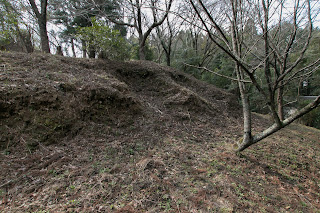




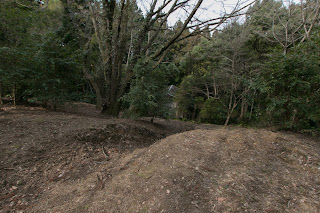














































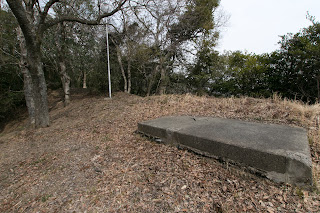























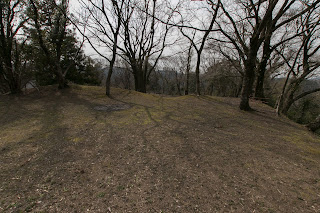
























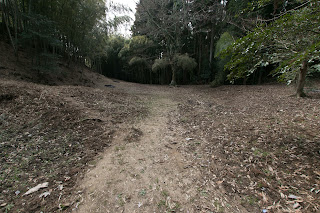
























No comments:
Post a Comment